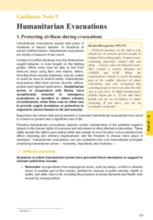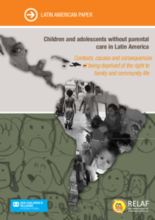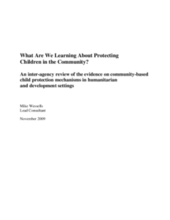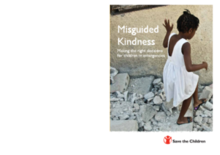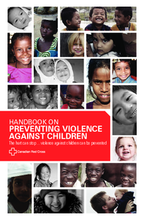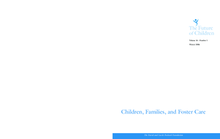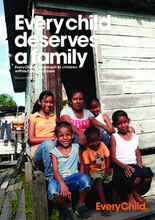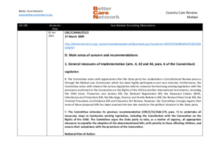Displaying 411 - 420 of 516
The handbook provides operational guidance and tools to support effective protection responses in situations of internal displacement.
This guidance note is part of the Handbook for the Protection of Internally Displaced Persons launched by the Global Protection Cluster in Geneva in June 2010. The target audience is staff of humanitarian, human rights and development agencies working in IDP operations in the field.
This paper is based on The Latin American Report: The situation of children in Latin America without parental care or at risk of losing it. Contexts, causes and responses, which was prepared using reports from 13 countries in the region. The paper gives an overview of the state of one of the most fundamental rights - the right to parental care, a keystone for the right to live in a family and a community.
The Guidelines from the IAWG provide some of the strongest direction for ensuring emergency efforts protect family unity and avoid child-family separation. Where family unity can not be preserved, these guidelines instruct on tracing and family reunification, care arrangements, durable arrangements, special issues related to refugee children, and promotion of children’s rights.
An interagency review of the available global evidence on community-based child protection mechanisms, their effectiveness, cost, scalability, sustainability and impact on children’s protection and wellbeing
Using lessons learnt in emergencies, from the genocide in Rwanda to the Asian Tsunami and the earthquake in Haiti, our new report, Misguided Kindness, demonstrates what action is needed to keep families together during crises and to bring separated children back into a safe and nurturing family life.
The Canadian Red Cross has produced a handbook on the prevention of violence against children. The handbook includes specific guidance on preventing violence against vulnerable children, such as children in institutions, children involved in armed conflict and children with disabilities.
Provides global estimates of the number of highly vulnerable children; a summary of United States Government (USG) assistance programs for highly vulnerable children; a summary of progress coordinating the response among USG agencies; key strategic issues and opportunities; priorities for 2009–2010 and beyond; and a summary of the results and achievements of USG assistance
This document outlines EveryChild’s approach to the growing problem of children without parental care by defining key concepts, analysing the nature and extent of the problem, exploring factors which place children at risk of losing parental care, and examining the impact of a loss of parental care on children’s rights.
This country care review includes the care-related Concluding Observations adopted by the Committee on the Rights of the Child.


